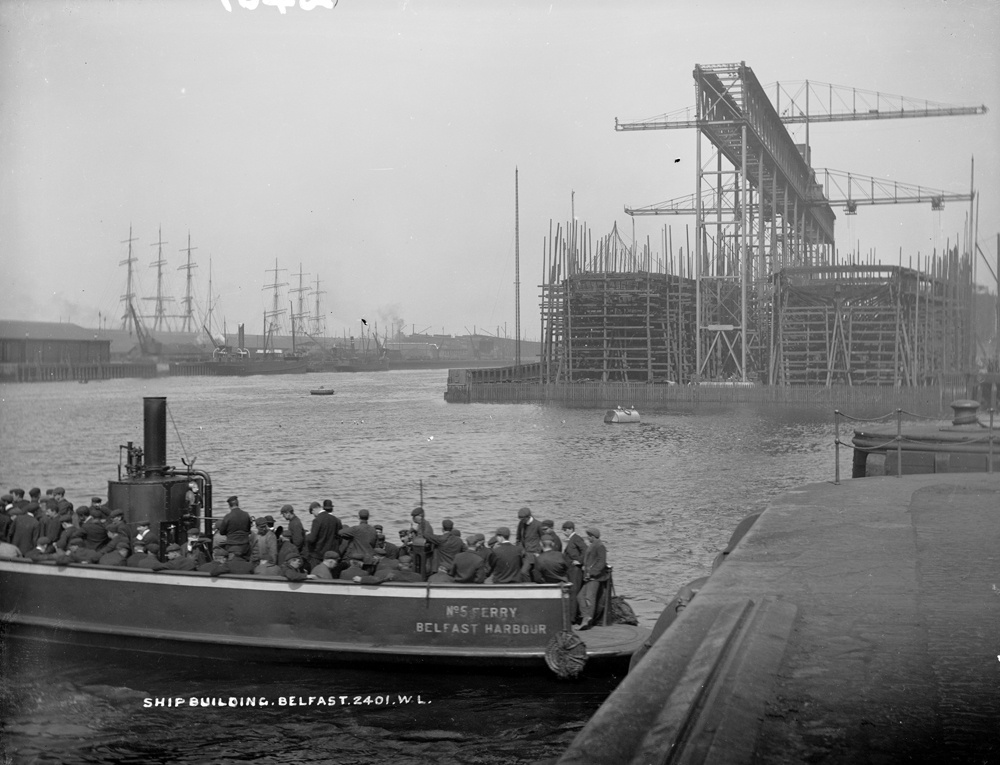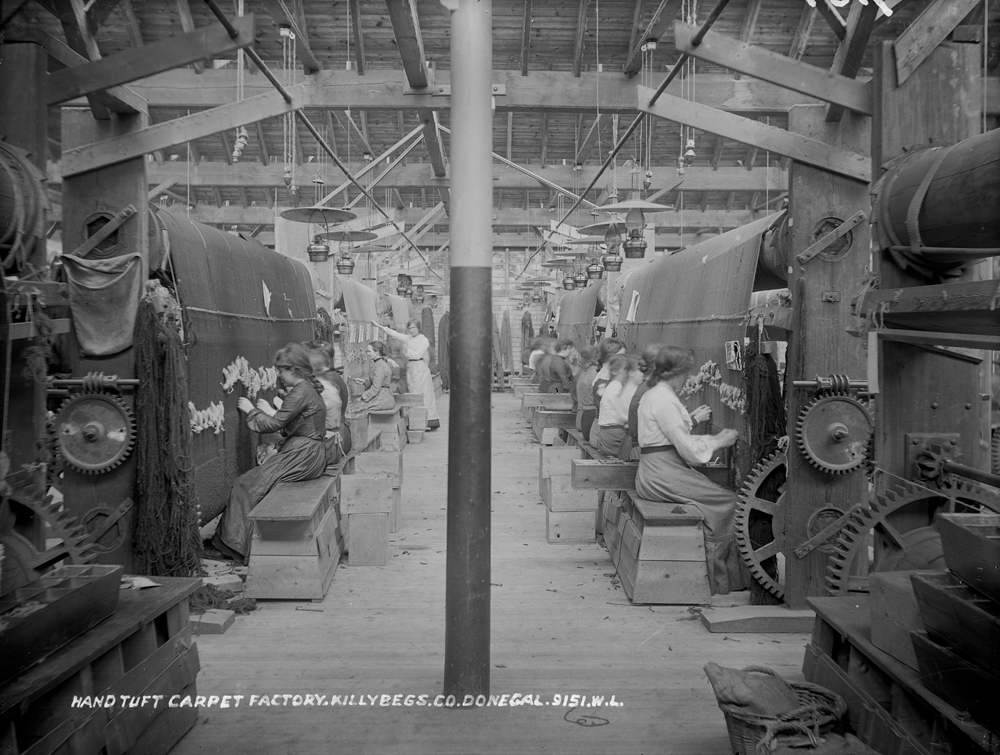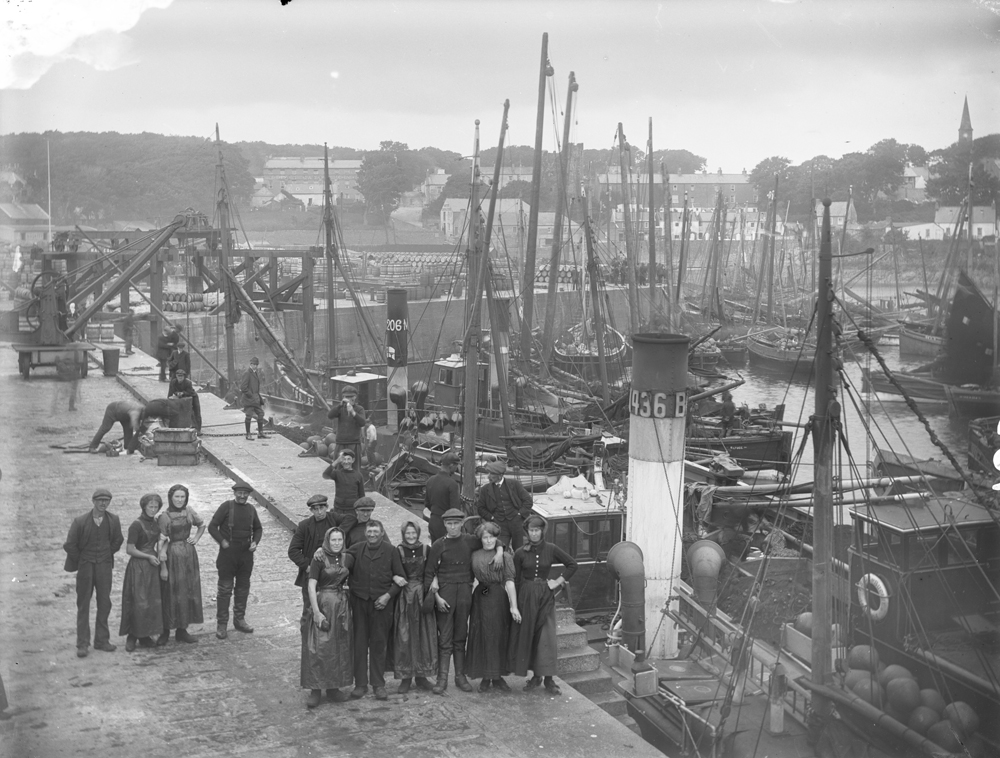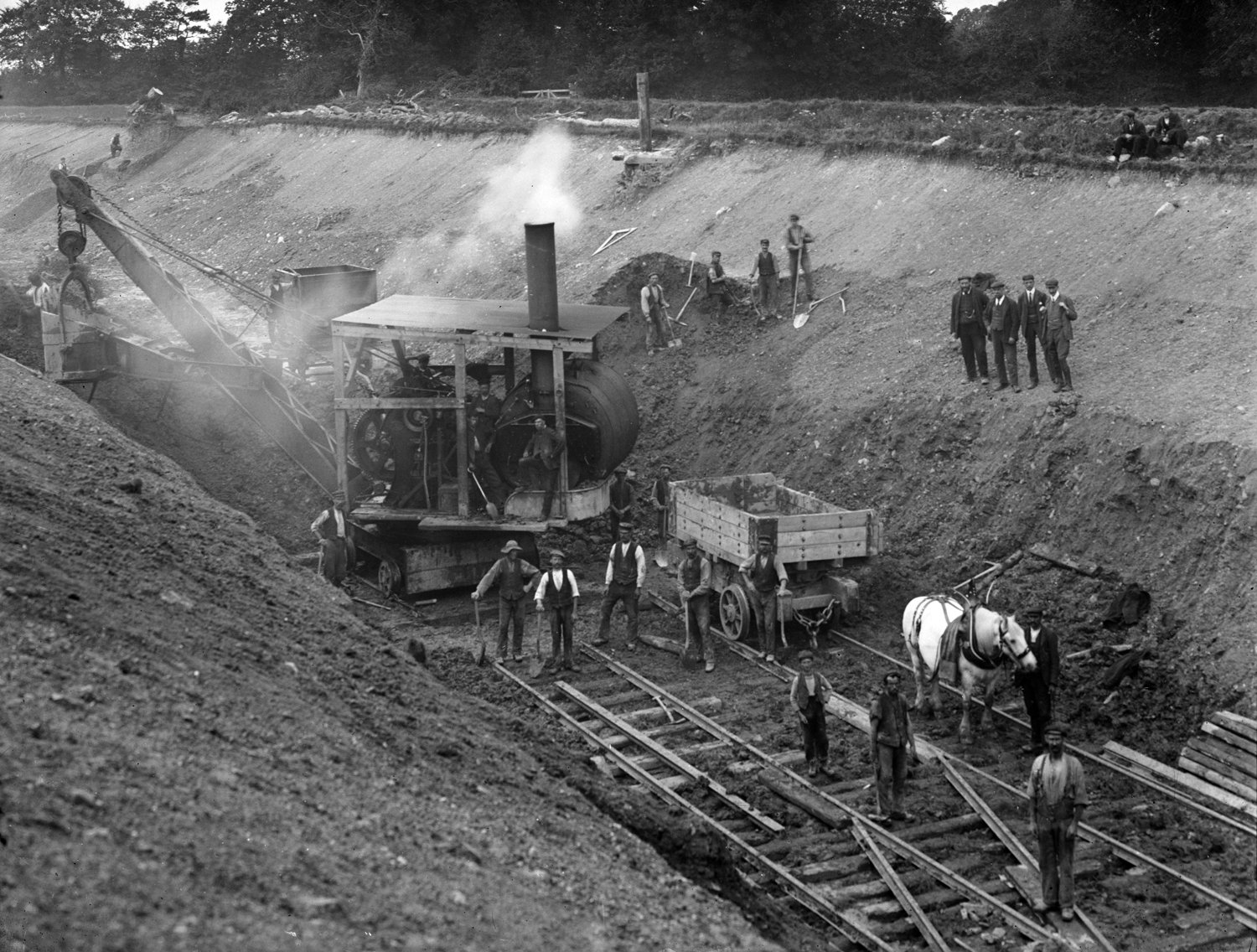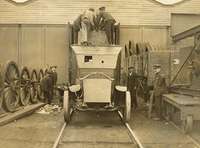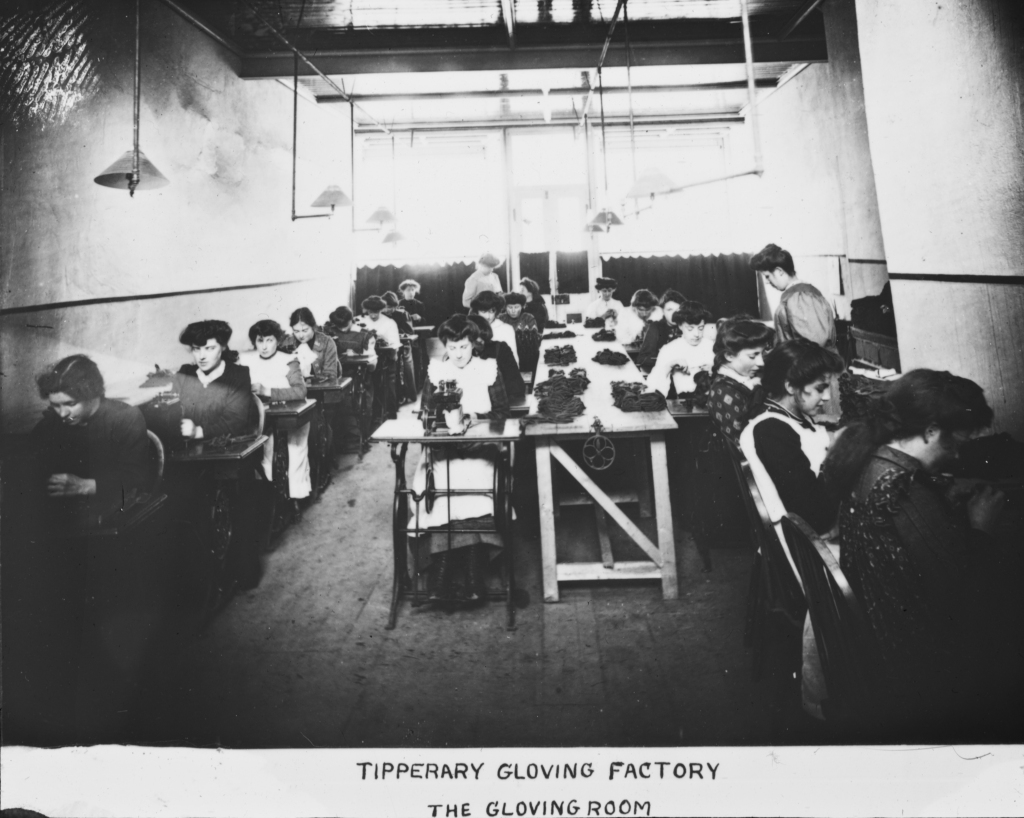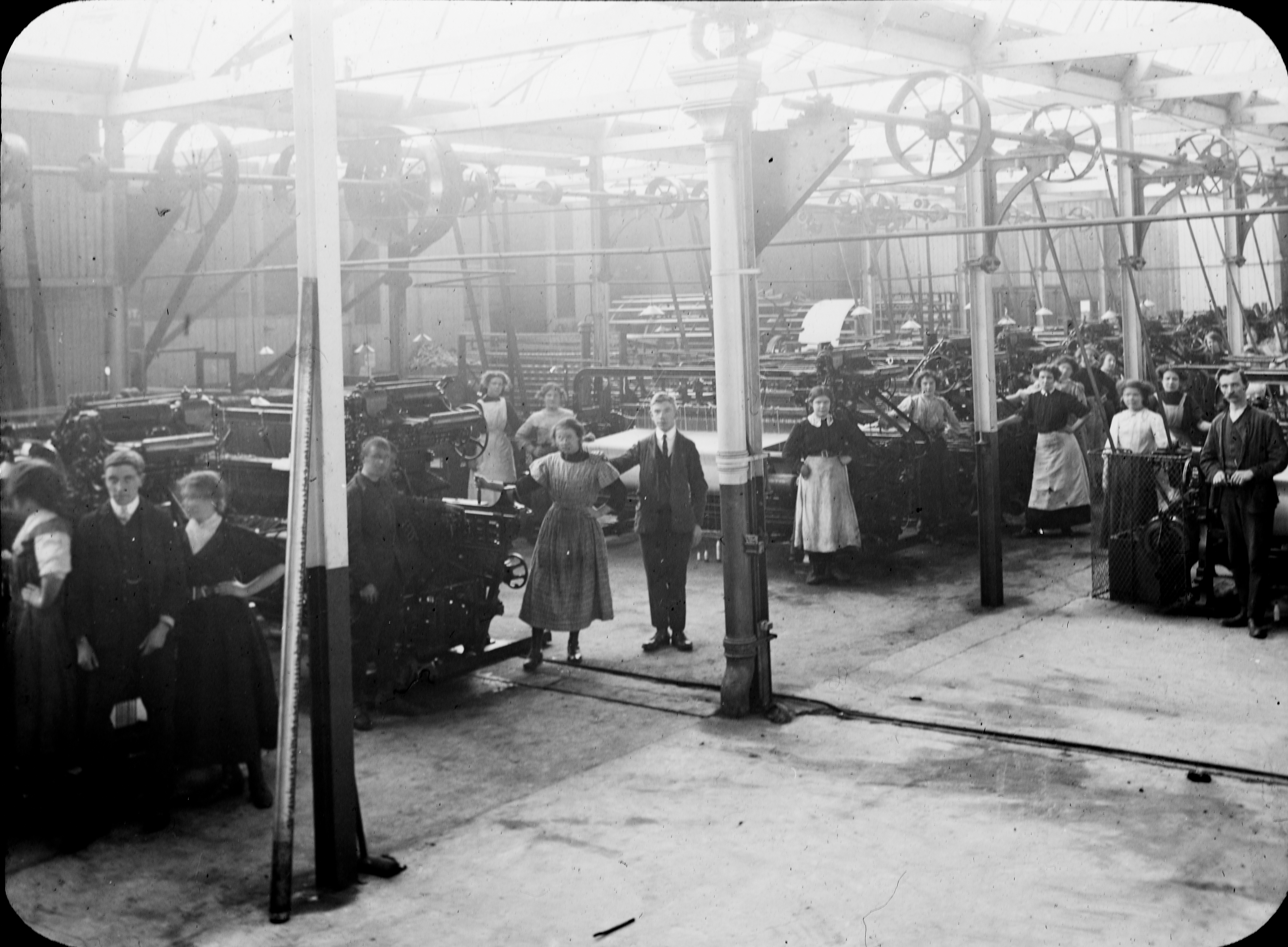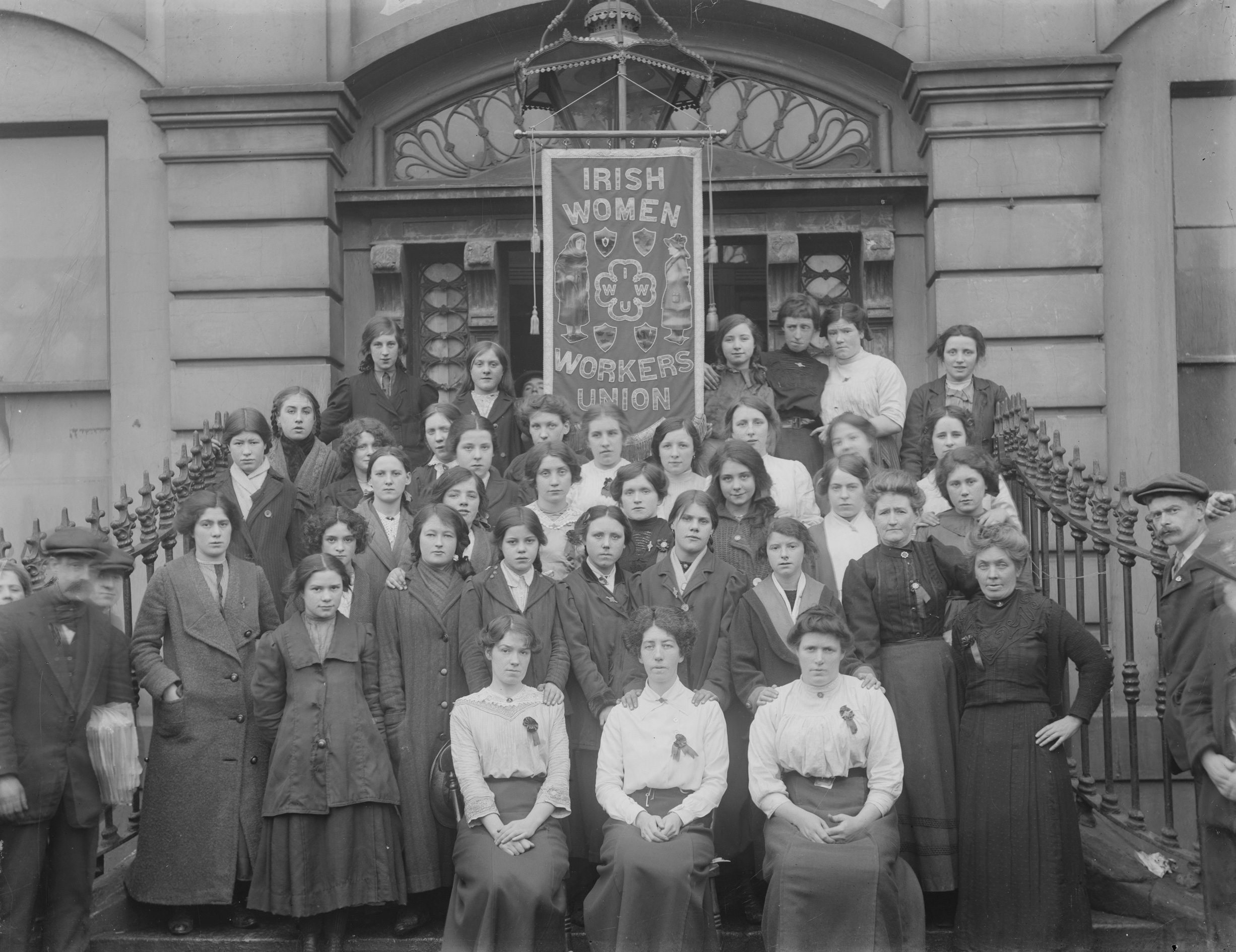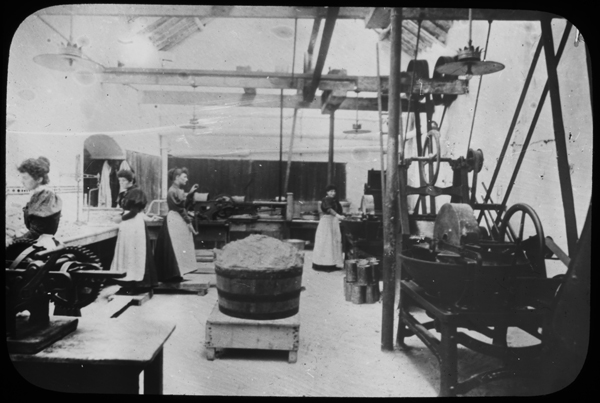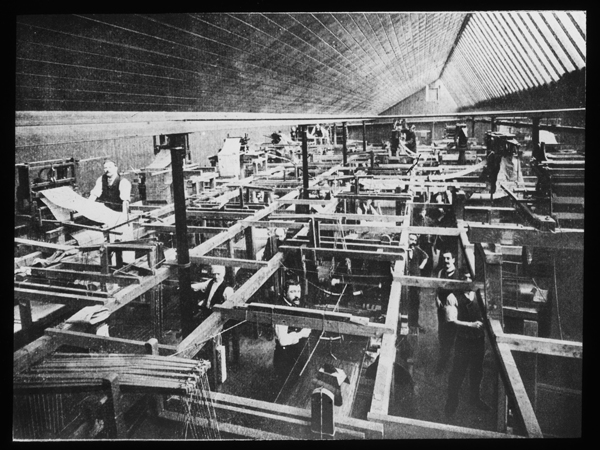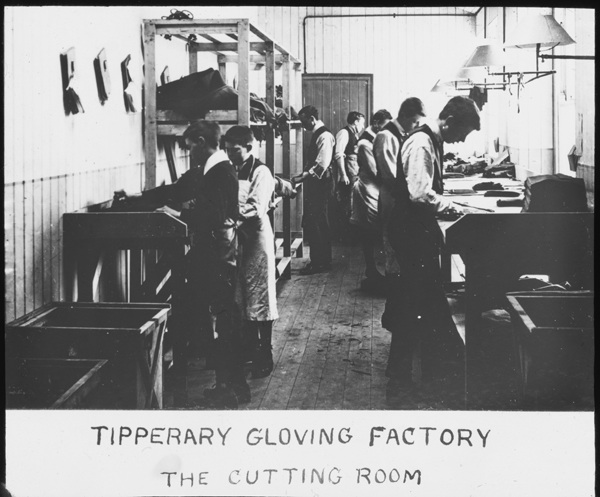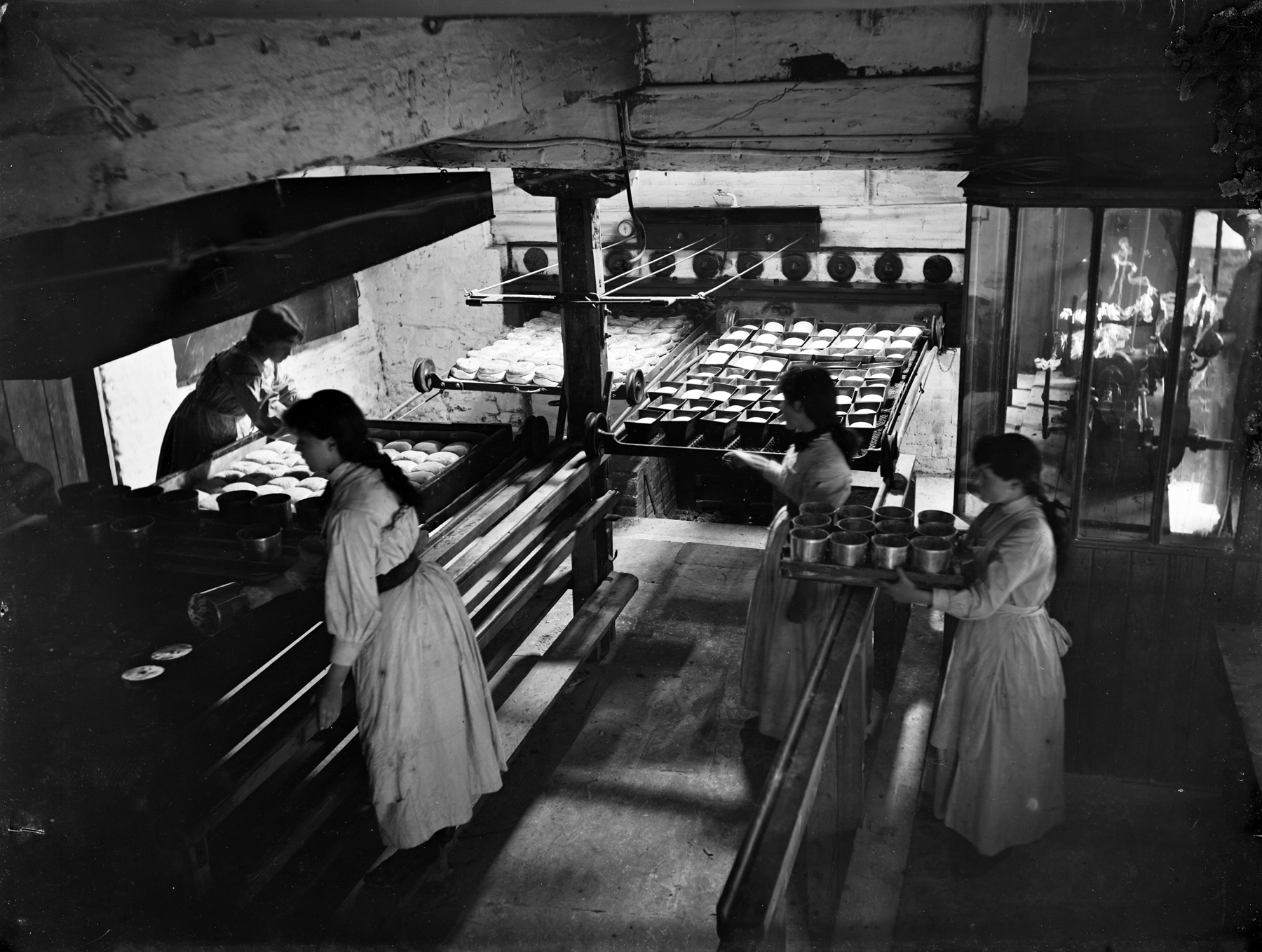Galleries
National Library of Ireland Collections
KE 121 GPO 1916: Men at work
A major building strike in Dublin was resolved after the Easter Rising when Major Fairbairn Downie of the Ministry of Munitions arbitrated on the dispute. He awarded pay rises to the workers of one penny ha’penny an hour, of which a penny was a ‘war bonus’ that would cease once the articles of peace were signed. (Keogh Collection, NLI)
L_ROY_02401 The Ormeau Ferry, ca 1900
The rise of Belfast as a major centre for ship building saw the creation of a highly skilled workforce that joined British based engineering craft unions. (Lawrence Collection, NLI)
L_ROY_09151 Donegal, ca 1900
Women working in a handtuft carpet factory in Donegal. Hours were long, pay rates low and the area proved notoriously difficult to organise, compared with Sligo and Derry. (Lawrence Collection, NLI)
L_ROY_11294 Fishing Industry
Fishing ports such as Ardglass provided perilous, labour intensive work. Only in fishing harbours near well organised urban centres such as Dublin was it possible to organise workers into unions. (Lawrence Collection, NLI)
P_WP_1494 Railway Workers
During the late nineteenth and early twentieth century, railway construction was a major source of employment for unskilled labour in Ireland. William Martin Murphy was one of the major contractors. There was a significant wage differential with Britain but if the gap grew too wide many of the workers would emigrate. There were also large British state subsidies to promote railway construction in Ireland making it more attractive for employer and employee alike. Disputes were more likely between railway companies and their direct employees such as porters, drivers and clerks than between the contractors building the railways and their navvies who were not unionised. (Poole Collection, NLI)
P_WP_1494 Railway, 1922
The IRA deliberately attacked the railway network to destroy the economic and social infrastructure of the Free State. The Railway Maintenance, Repair and Protection Corps recruited workers laid off to help protect the network. Armoured cars were adapted to run on railway tracks, such as this vehicle at the GSWR works in Inchicore, Dublin. (Poole Collection, NLI)
1_M_1_001 Glove Factory 2/2
Women in the same plant sew together the fabric cut by the male cutters under the supervision of female supervisors. (Mason Collection, NLI)
1_M_01_13 Manufacturing Plant
In this machine shop, men and women can be seen working together but with the men in a dominant role. One even has his hand proprietorially on the shoulder of one woman. (Mason Collection, NLI)
KE 203 Irish Women Workers Union
Taken outside Liberty Hall, with Irish Women Workers Union Secretary Delia Larkin centre stage, this defiant picture was probably taken in the aftermath of the 1913 Lockout. Note the extreme youth of the ‘women’, most of whom would still be at school today. (Keogh Collection, NLI)
9542764687_810a920ec_0 Agricultural Workers, ca 1900
Following the establishment of the Agricultural Wages Board by the British government in 1917 trade union membership grew dramatically in Ireland, particularly for the ITGWU which was transformed from a transport workers union based in the port cities to having a branch in virtually every town and village in Ireland. The Board provided automatic union recognition as farmers and workers organisations agreed rates of pay and conditions under a government appointed Chair. For instance the ITGWU, which had no branches in County Dublin in 1916, had 11 branches and over 1,600 members by 1918. (Mason, Collection, NLI)
M12_S13 Women at work in a sausage factory, Ca 1900
Women were increasingly employed in the processing of meat products by the early 1900s. Men were usually employed as butchers, skilled maintenance workers or general labourers. (Mason Collection, NLI)
M11_S15 Production Lines
Men working on production lines ‘finishing’ boots at Winstanley’s factory in Dublin’s Liberties are complemented by women in the ‘closing room’. (Mason Collection, NLI)
M7_S23 Men at work in Navan saw mill
Navan was the centre of furniture manufacturing in the country. Despite this, Labour was poorly organised politically in the town and in the urban district council elections of 1920 only one ‘Labour’ candidate was elected, although six of the ten successful Sinn Féin candidates described themselves as ‘Sinn Féin-Labour’. (Mason Collection, NLI)
022 Sackville Street, 1922
During the Civil War there was greater disruption to the economy and destruction of property than in the War of Independence, adding to the soaring levels of unemployment that followed the end of the post-war boom. Wages and trade union membership fell sharply. (Cashman Collection, NLI)
M6_S11 Glove Factory 1/2
Sexually segregated workforce ca 1910. Work in early manufacturing plants was often segregated by gender. Men working in the cutting room of this Tipperary gloving factory have no contact with the women who finish the gloves. (Mason Collection, NLI)
P_WP_0111 Women Bakers, Ca 1900
Large bakeries in Dublin, Belfast and other major urban centres were highly unionised but in smaller enterprises such as Adair’s bakehouse in Waterford women often worked for much lower wages, or practically none if related to the owner. Their bread often sold for less than unionised factories and were known as ‘outside’ loaves in Dublin. But retailers rarely passed on the price reduction. (Poole Collection, NLI)


